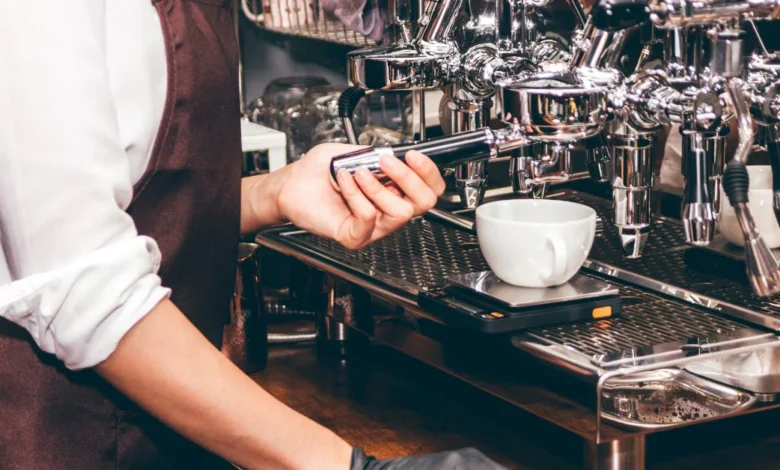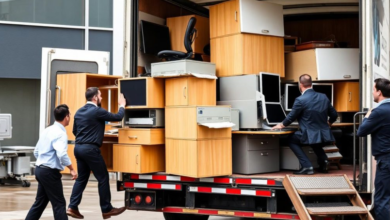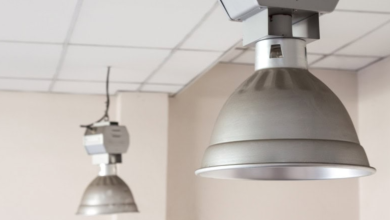What to Consider Before Investing in a Café-Grade Coffee Machine

Picture this: it’s 7 AM on a Monday morning. Your café doors open, and a line of customers starts forming. Everyone wants their perfect cup of coffee before work. Your coffee machine is working hard, pulling shot after shot. This is when you realize your machine isn’t just equipment—it’s the heart of your business.
Buying a café-grade coffee machine is one of the biggest decisions you’ll make as a coffee shop owner. The right machine can help you serve great coffee quickly and keep customers coming back. The wrong one can slow you down, cost you money, and frustrate your team. This guide will walk you through everything you need to know before making this important investment.
Understanding Your Business Needs
Before you start looking at shiny machines with all the bells and whistles, you need to understand what your business actually needs.
Daily Volume and Customer Flow
How many cups of coffee will you serve each day? This question matters more than anything else. A small neighborhood café serving 50 cups a day has very different needs than a busy downtown shop making 300 drinks.
Think about your peak hours. Most cafés see a morning rush between 7 and 9 AM. Can your machine handle making 10 to 15 drinks in a row without slowing down? Some machines need recovery time between shots. Others can keep going all day long.
Match your machine to your volume. Low-volume machines work for up to 100 cups per day. Medium-volume machines handle 100 to 200 cups. High-volume machines are built for 200 cups or more. Buy based on your busiest days, not your slowest ones.
Space and Location Requirements
Measure your counter space before you fall in love with a machine. Café-grade machines are bigger than home models. They need room for the machine itself, plus space for your grinder, knock box, and workflow.
Most commercial machines need a direct water line connection. They also need 220-volt electrical outlets, not the regular 110-volt ones in your home. Talk to an electrician and plumber early in your planning. These setup costs can add thousands to your budget.
Think about your barista’s workflow too. Can they reach the machine comfortably? Is there room to steam milk and pull shots at the same time? Good placement makes your team faster and your service better.
Types of Commercial Coffee Machines
Walking into a coffee equipment store can feel overwhelming. There are so many types of machines, each with different features and price points. When you’re ready to invest in quality commercial coffee machines, understanding the main categories helps you make a smart choice.
Traditional Espresso Machines
Traditional machines give baristas full control over every shot. They can adjust pressure, timing, and temperature for each cup. These machines are perfect for specialty cafés where quality and craft matter most.
The downside? Your baristas need proper training. A skilled barista can make magic with these machines. An untrained one will waste coffee and slow down service. Traditional machines work best when you have experienced staff or time to train your team properly.
Automatic and Super-Automatic Machines
Automatic machines do most of the work for you. Press a button, and the machine grinds the beans, pulls the shot, and even froths the milk. These bean-to-cup systems are popular in high-volume settings like office buildings, hotels, and busy cafés.
The main benefit is consistency. Every cup tastes the same, no matter who makes it. Training new staff takes hours instead of weeks. The trade-off is less control over the final product. You can’t adjust each shot the way you can with a traditional machine.
Heat Exchange vs. Dual Boiler Systems
This might sound technical, but it’s actually simple. Heat exchange machines use one boiler to heat water for both espresso and steam. They’re more affordable and work well for most cafés.
Dual boiler machines have two separate boilers—one for brewing, one for steaming. This means better temperature control and the ability to steam milk while pulling shots. If you’re making lots of milk-based drinks during rush hour, dual boilers can speed up your service significantly.
Budget and Long-Term Investment Planning
Let’s talk money. Café-grade machines aren’t cheap, but they’re built to last and make money.
Initial Purchase Cost vs. Long-Term Value
Entry-level commercial machines start around $3,000 to $5,000. Mid-range machines run $5,000 to $12,000. Top-end machines can cost $15,000 or more. That’s a big range, and price does matter—but not in the way you might think.
A cheap machine that breaks down every few months will cost you more in repairs and lost business than a quality machine that runs for years. Look at reliability ratings and reviews from actual café owners. A machine that lasts ten years costs less per day than one that dies after three.
Think about your coffee quality too. Better machines make better coffee. Better coffee keeps customers coming back. That repeat business pays for your machine investment faster than you think.
Operating and Maintenance Costs
The price tag is just the beginning. Every machine has ongoing costs you need to budget for.
Water filters need replacing every few months. Cleaning supplies, descaling solutions, and group head maintenance add up to $50 to $100 per month. Some machines use more electricity than others. Energy-efficient models cost more upfront but save money on your power bill.
Parts will eventually need replacing. Gaskets, seals, and portafilter baskets wear out. Choose a machine with parts that are easy to find and reasonably priced. Some Italian brands require importing parts, which can take weeks and cost extra.
Financing Options
Most coffee shop owners don’t pay cash for their machines. Financing and leasing options make it easier to get the equipment you need.
Leasing lets you spread the cost over three to five years. Monthly payments are easier on cash flow than a large upfront purchase. Some lease agreements include maintenance and repairs, which protects you from unexpected costs.
Buying with financing means you own the machine from day one. Once you finish paying, you own it outright with no more payments. Compare interest rates and terms from different lenders to find the best deal.
Don’t forget about warranties. A good warranty saves thousands in repair costs. Look for at least a one-year parts and labor warranty. Extended warranties and service plans cost extra but give you peace of mind.
Essential Features to Look For
Not all features matter equally. Focus on these key elements when comparing machines.
Build Quality and Materials
Commercial machines take a beating. They run for hours every day in hot, humid conditions. Look for solid stainless steel construction, not plastic parts that crack and break.
Check the boiler material. Copper and brass boilers last longer and maintain heat better than aluminum. The machine should feel heavy and solid. If it feels flimsy in the showroom, it won’t survive a busy café.
Make sure your machine meets local health and safety codes. In most places, commercial food service equipment needs specific certifications. Your health inspector won’t approve a machine without proper certifications.
User-Friendliness and Training
Your baristas will use this machine hundreds of times per day. It needs to be intuitive and comfortable to operate.
Look for clear controls and displays. Your staff shouldn’t need to guess what each button does. Programmable settings let you dial in your recipes and maintain consistency across shifts.
Consider your training needs. How long does it take to train someone on this machine? If you have high staff turnover, a simpler machine might serve you better than a complex one, even if the complex one offers more features.
Consistency and Temperature Control
Great coffee requires precise temperatures. Water that’s too hot tastes burnt. Water that’s too cool tastes sour and weak.
Look for machines with PID controllers. These digital systems maintain exact temperatures throughout the brewing process. Stable temperature means every shot tastes the way you intended.
Consistency matters for business. When customers order their favorite drink, they expect it to taste the same every time. Machines with good temperature stability and pressure control deliver that consistency shot after shot.
Maintenance and Longevity
A café-grade machine can last ten to fifteen years with proper care. Skip the maintenance, and it might not last three.
Regular Maintenance Requirements
Every day, your team needs to backflush the group heads and wipe down the machine. This takes about ten minutes but prevents most common problems.
Weekly tasks include deep cleaning the steam wands and checking the drip trays. Monthly maintenance involves descaling and replacing worn gaskets. These tasks sound tedious, but they’re much easier than dealing with a broken machine during breakfast rush.
Water quality matters more than most owners realize. Hard water leaves mineral deposits that clog lines and damage boilers. Install a good water filtration system and change filters on schedule. This one step can double your machine’s lifespan.
Service and Support
Even the best machines need repairs eventually. Can you get help when something goes wrong?
Check if there are certified technicians in your area. Some brands have dealer networks with local support. Others require calling a national service line and waiting for parts to ship. In the coffee business, being down for a week can cost thousands in lost sales.
Read your warranty carefully. What’s covered and for how long? Who pays for labor? Who pays for shipping if the machine needs factory repairs? Understanding these details before you buy prevents nasty surprises later.
Ask other café owners about their experiences. Which brands have responsive customer service? Which ones leave you on hold for hours? Real-world feedback is worth more than any marketing brochure.
Making the Final Decision
You’ve done your research. You understand the different types of machines, the costs involved, and the features that matter. Now it’s time to decide.
Start by making a list of your must-have features. What does your business absolutely need? Then list your nice-to-have features—things you’d like but could live without. This helps you stay focused when salespeople try to upsell you on features you don’t need.
Visit other cafés if you can. Watch their machines during busy times. Talk to owners and baristas about what they love and hate about their equipment. This real-world insight helps you avoid common mistakes.
Remember, this machine will affect every cup of coffee you serve. It impacts your customers’ experience, your team’s efficiency, and your bottom line. Take your time. Ask questions. Get demonstrations. The right machine is out there—you just need to find it.
Consider working with a reputable supplier who can guide you through the options and provide ongoing support. Making an informed decision now will pay dividends for years to come. Your perfect cup of coffee starts with the right equipment.



